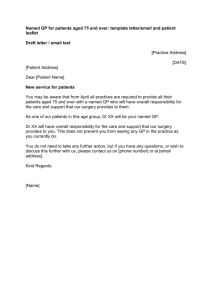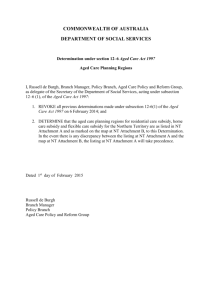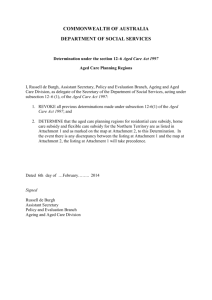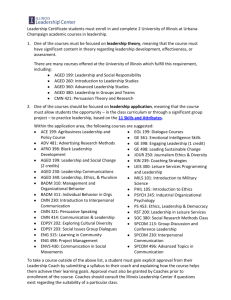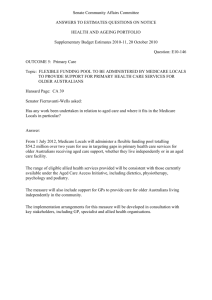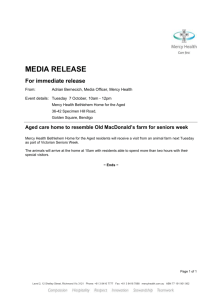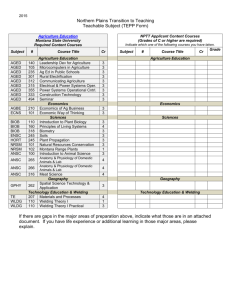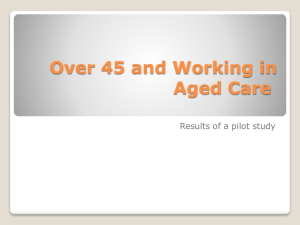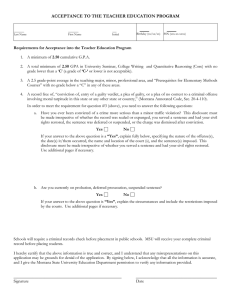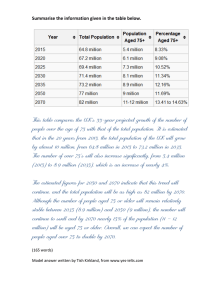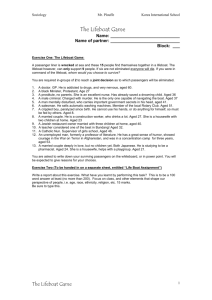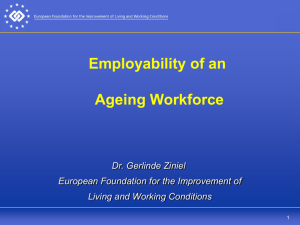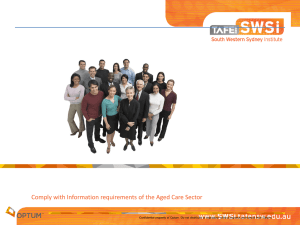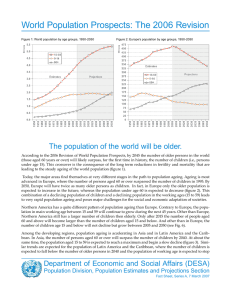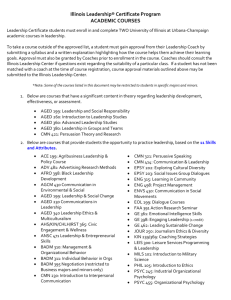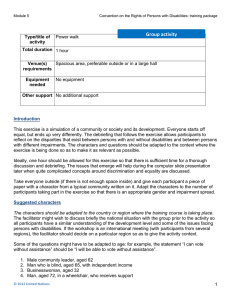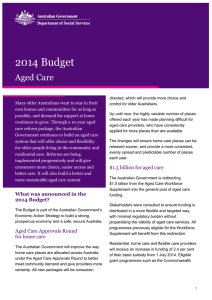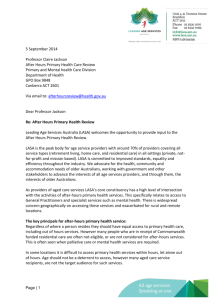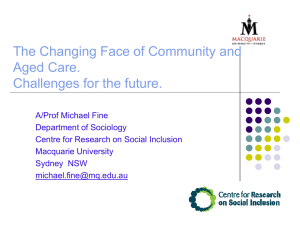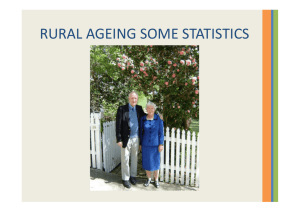What do the reforms mean for the Customer – Provider Relationship
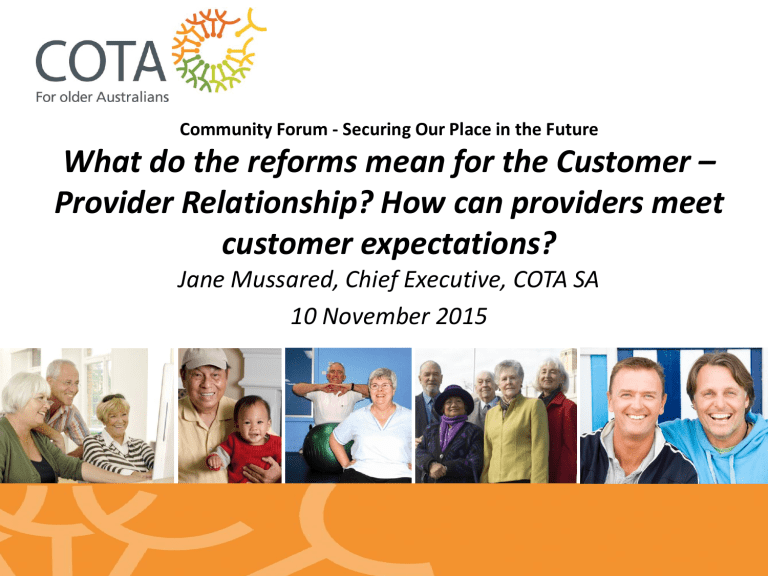
Community Forum - Securing Our Place in the Future
What do the reforms mean for the Customer –
Provider Relationship? How can providers meet customer expectations?
Jane Mussared, Chief Executive, COTA SA
10 November 2015
Who and what is COTA?
#reframingageing
2
Aged care will grow a lot….
2014
Aged over 65 Percentage aged over
3 million
65 2010
14%
Percentage aged over 65
2050
25%
People with dementia
340,000
2050 8 million 25% 36.5% 900,000
3
Growing workforce
• Largest employing industry in Australia, employing more than 1.4m people (12.3% of the total workforce)
• Increased by 458,500 (or 48%) over the 10 years to May 2014 - largest growth industry in
Australia over this period
• Average annual growth rate of 4% - double the growth of 2% in all industries
4
The Aged Care Market
5
“get out of the way; let consumers decide what they want and allow the market to supply what is needed.”
Former Aged Care Minister Mitch Fifield, Nov 2014
So what might that mean?
• What do the reforms mean for the
Customer – Provider Relationship?
• How can providers meet customer expectations?
• Nobody knows exactly what it will mean
• But there are some questions that might help…
7
From – Provider with Government
Customer
Government
Service
Provider
8
To - Provider with Customer
Customer
Government
Service
Provider
9
And its no longer exclusive…..
Brokers
Information
Move & declutter
Ironing, home maintenance etc
Customer (& their network)
Health
Housing
Financial Advice
Service Provider
10
New measures of quality
Government Customer and their network
Passing Accreditation
95% survey satisfaction
Focus on benchmarking
Financial accountability to government
Focus on ACAR & passing accreditation
Exceeding expectations
Deep conversations with new insights
Focus on point of difference
Explaining price to customer
Focus on each part of the value chain
11
Quality Systems and Better
Practice
12
The Theory of Markets
• if the price isn’t right, don’t buy
• if the service is sub-par, go elsewhere
• if what you want isn’t available, try someone else
• if advice and extra care matters, pay more
13
Wow! - Kano Model
14
Surveys v Conversations
15
Benchmarking v Point of
Difference
16
Pricing
17
Value Chain
Exit
General promise – market pitch
Individual promise – personal pitch
Delivery
Agreement
&
Expectations
18
Battle of the brands?
Misao Okawa
19
The re-emergence of craft beer
20
Foodland takes it up to
Woolworths and Coles
21
Market Limitations
1. Ageism
2. Power Imbalance
3. Immature Market
4. Low expectations of selves
5. Thin or non-existent markets
6. Artificial cap on what and how much
7. Exclusion and marginalisation
22
Cultural Diversity
23
Wealth Diversity
• Low Super
• Home ownership in free fall
• No jobs
24
It will thus be a highly segmented market, not only for aged housing and aged care, but for all the goods and services older people use.
Professor Graeme Hugo, 2014
25
So then, how can providers best identify and meet the expectations of consumers?
26
Reframe ageing…
“Things have been shaken up enough that truly there's this opportunity on the horizon for reinventing the idea of what it means to age.”
Sloan Center for Work and Aging
27
Dementia Friendly
No one wants to spend time with me now that I have a diagnosis. It is like they think I no longer count and I am not a person anymore.
Man with dementia, Alzheimer ’s Australia 2014
28
New Language
Customer or
Consumer or
Citizen
Or
?
29
Strong Communities
30
Co-Design
31
Complaints, Rights and Advocacy
32
Information and Language
Services
33
Uncap Supply
Is this the right amount and type?
• 78 residential care places
• 2 “reablement” places
• 45 home care places
34
Technology and equipment
35
Ian Day
Chief Executive
COTA NSW www.cotansw.org.au iday@cotansw.org.au
36
